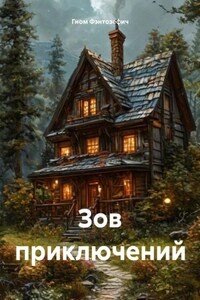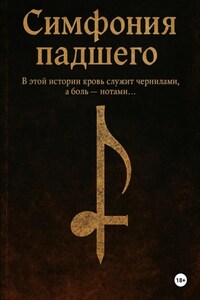This book is meant to be the beginning of my new universe. In it, you will get to know the interesting fate of a character who, despite the contradictions and misunderstandings in his family, chose his own path and decided to make his old dream come true. While overcoming his path, he will find new friends, love and find happiness.
But his story won't end with this book, as this interesting and exciting story awaits us.
The story in this book is just one of thousands, tens, hundreds of thousands that are countless in my universe. Over time, you'll learn some of them. Some will consist of several parts. Some from one. But they will all have one thing in common: a new universe that lives by its own laws and rules.
A little about the universe
Forget about the familiar existence and structure of the modern cosmic universe. Forget that the Earth is round, that there are other planets. Imagine that our whole world is a flat map with settlements located at a certain distance from each other.
This world has nothing to do with our past, our present, or our future. Despite the fact that it contains technologies, languages, and resources that are familiar to us. Imagine a world without states, flags or nationalities. There are only cities and villages that differ in population, technology and resources. The same language is used everywhere – English. Cities and villages fall into eight categories:
1) Cities with diamond status. There are 5 of them in total. Each of them has a population of more than 50 million people. They have the highest level of development and technology.
2) Platinum cities. There are only 20 of them. Each of them has a population of 25 to 50 million people. The level of development and technology is very high, but slightly lower than that of cities with diamond status.
3) Cities with gold status. Their number is one hundred. The population in such cities varies from 10 million people to 25 million. The level of development and technology is high.
4) Cities with silver status. There are about 500 of them. They have a population of 1 million to 10 million people. The level of development of technologies and resources is average.
5) Cities with bronze status. They are also called “transport hubs” because they are most often used by routes connecting large cities. Most residents of these cities service trucks and cars and provide overnight accommodation for drivers and passengers. There are about 2,500 of them on the map. The population ranges from 100,000 to 1 million people. The level of development and resources is low.
6) Villages with a population of 30,000 to 100,000 people. There are about 5,000 of them. The level of development is minimal.
7) Villages with a population of 1,000 to 30,000 people. They are industrial areas for the manufacture of various parts for large cities and villages, as well as agricultural farms that provide food for the entire population of the planet. There are around 50,000 of them.
8) Villages with a population of less than 1,000 people. There are only 25 of them. They have the highest level of security. They are specially designed areas for the richest and most influential people on the planet to live. You can't just get here. Only with special permission, which not even all members of the rich family have. The best quality roads, the best food, the best views of natural beauty (depending on location, these can be mountains, lakes, rivers, cliffs, waterfalls and volcanoes). These villages are cottage complexes with different houses and an adjacent area decorated with sculptures, flowers and plants. They have restaurants with unlimited free food and drinks to suit all tastes. Products are supplied directly from farms via a special underground transport channel and reach the cooks' kitchens. This is done in order not to create unnecessary unpleasant noise within the villages and not to let strangers enter their territory. Fitness centers and beauty salons are also located inside to maintain the physical shape and image of residents.
The new chronology began with the unification of settlements into one integrated system, which we know to this day. Until this point in the year, the numbers were ambiguous and there were constant debates about what year it was now. Therefore, it often happened that one year could pass in one village and another in another. After all, all cities and villages were founded at different times. Apparently, this is why every settlement calculated the passage of time based on its own basis. After the unification of cities and villages, all dates were reset to zero, and at the same time, on the day of signing the joint agreement “On Unification and Mutual Assistance”, it was recognized to consider the date of signing a “New Era”. On this date, all settlements entered year zero.
According to the generally recognized belief, there was no Jesus, Buddha or other prophets and gods with whom the inhabitants associated their annals. The faith was and remains unified: faith in a bright future. It was in no way named or portrayed in artistic or literary terms. The population of the whole world simply believed that there was life after death. What exactly happens on the other side no one knows. Everyone imagines leaving this life in their own way. There are municipal temples in which the standard rites for cremation of the deceased are held. They look like small one-story buildings made of natural stone. Inside, there is a reception desk at the entrance and a common room with an elevator in the middle. The most important part is underground. On the minus first floor there are ovens for burning the bodies of the deceased, and starting from the minus second floor, several floors down, there are cubicles where the urns of the deceased are kept. The booths are most often rented by the relatives of the deceased, or are provided free of charge for a certain period of time, provided that the relative has a valid gold card of life support. There are also so-called "Places of Remembrance" on each floor, starting at minus two. These are quiet, secluded spaces that allow you to honor those who have passed away. They are also, like the booths, either rented or free of charge.









